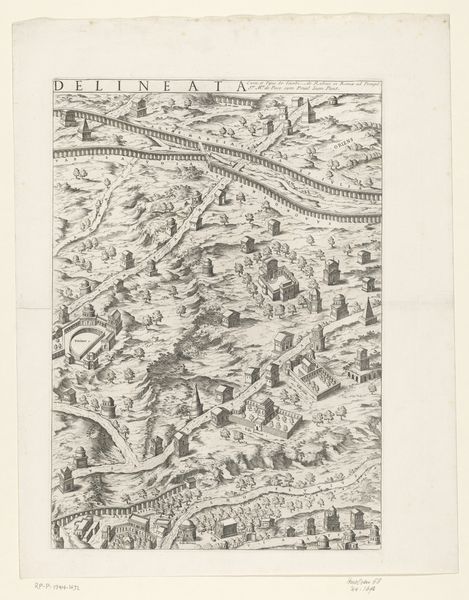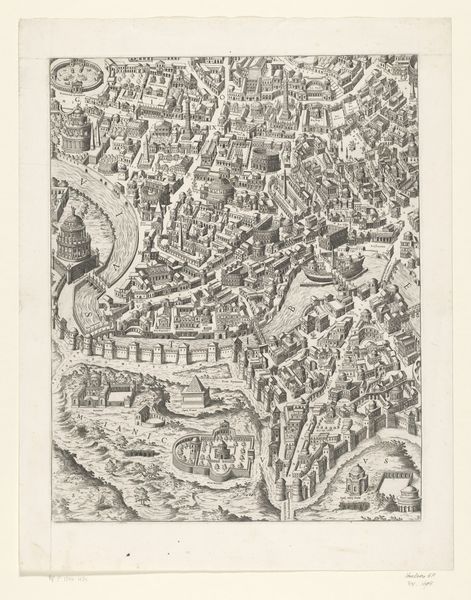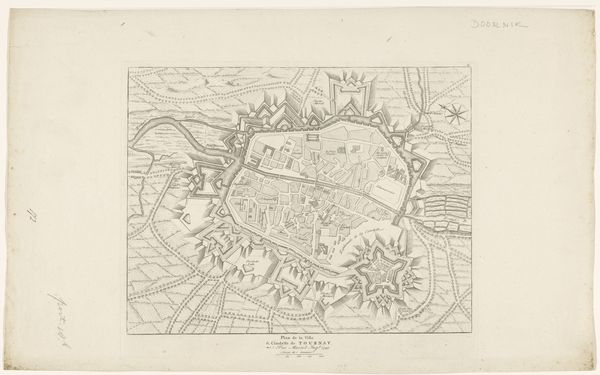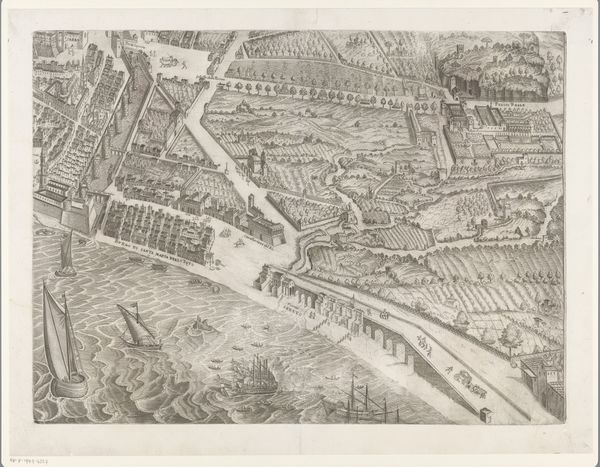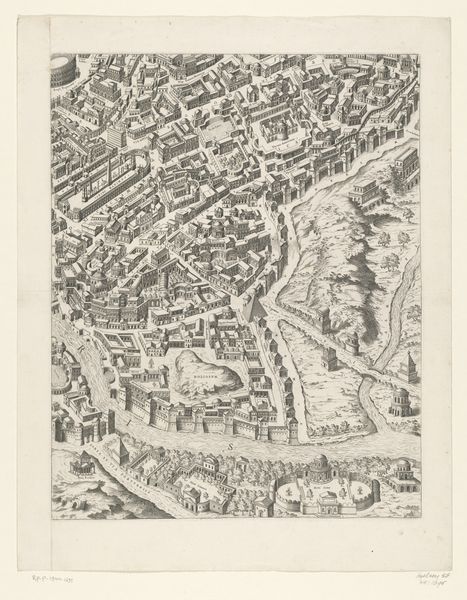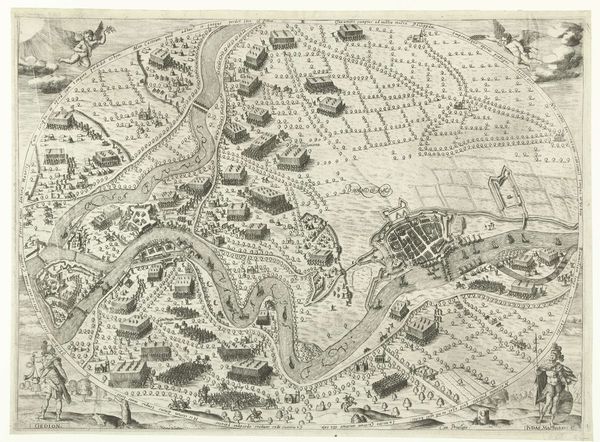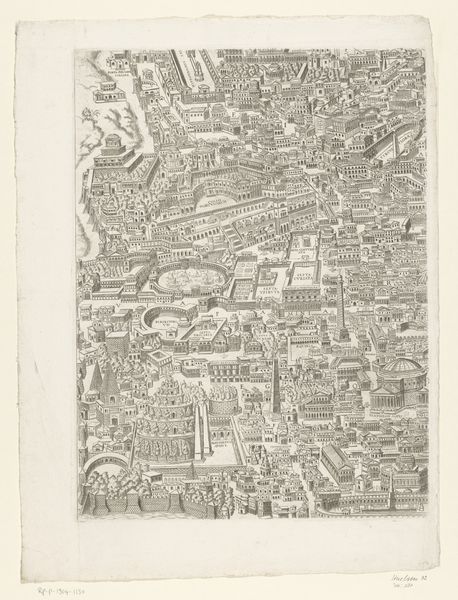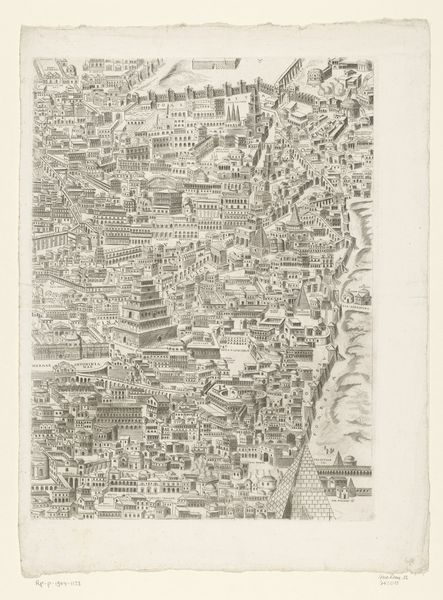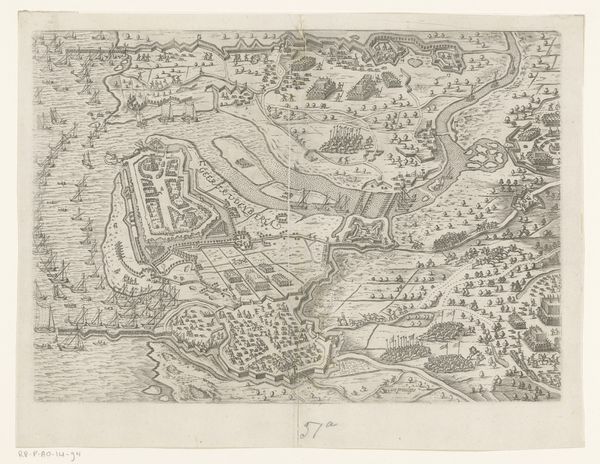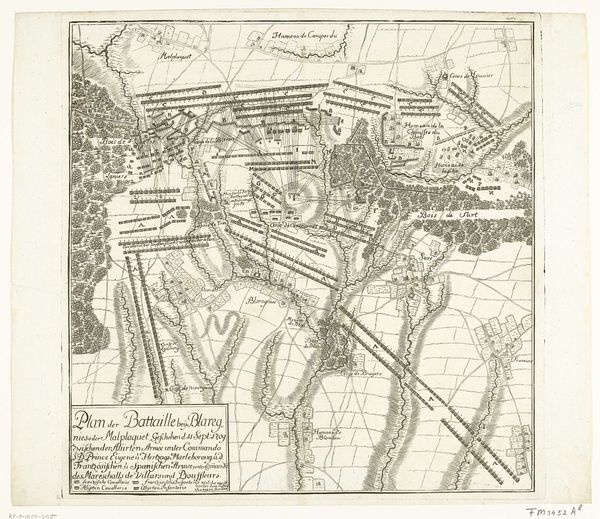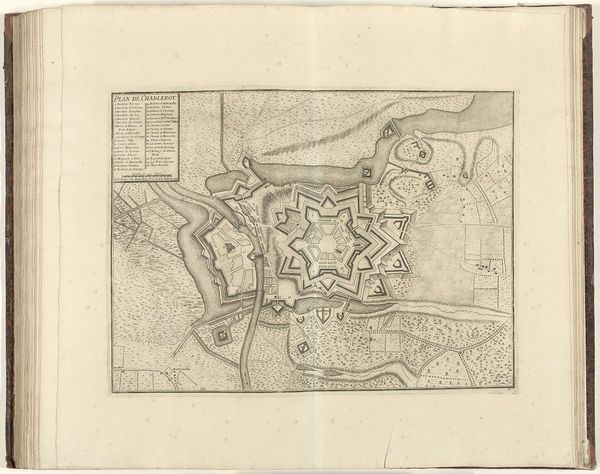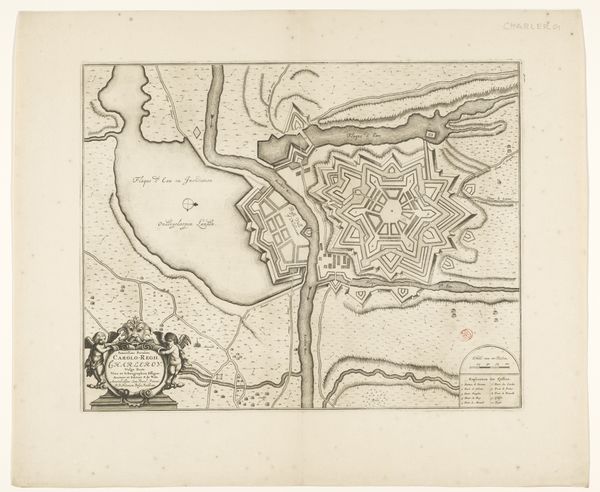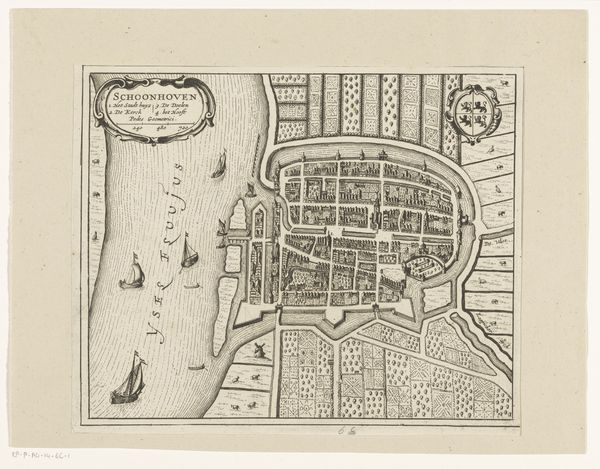
drawing, print, ink, engraving
#
drawing
#
baroque
#
pen drawing
# print
#
pen illustration
#
pen sketch
#
old engraving style
#
ink line art
#
ink
#
geometric
#
ancient-mediterranean
#
pen-ink sketch
#
thin linework
#
pen work
#
sketchbook drawing
#
cityscape
#
coloring book page
#
engraving
Dimensions: height 520 mm, width 412 mm
Copyright: Rijks Museum: Open Domain
Étienne Dupérac’s “Map of Rome in Roman Times,” offers a glimpse into the city’s ancient urban landscape. The Colosseum, with its massive presence, embodies the grandeur and the cruelty of Roman spectacle. Notice how the aqueducts stride across the landscape, channeling not just water, but also power and ingenuity. These structures remind us of the Roman’s mastery over nature, a theme that resonates through the ages, appearing later in Renaissance fountains and modern engineering feats. This impulse to dominate and shape the environment echoes a deep-seated human desire. The aqueduct’s form – a series of arches marching across the land – reappears in triumphal arches, bridges, and even the arcades of our modern cities. It is a symbol of continuity, of the enduring human need to create order and assert control. The symbols of Rome have an eternal return. This map, with its intricate details, serves as a reminder of the cyclical nature of history, where past glories and traumas resurface in unexpected ways, shaping our present and future.
Comments
No comments
Be the first to comment and join the conversation on the ultimate creative platform.
